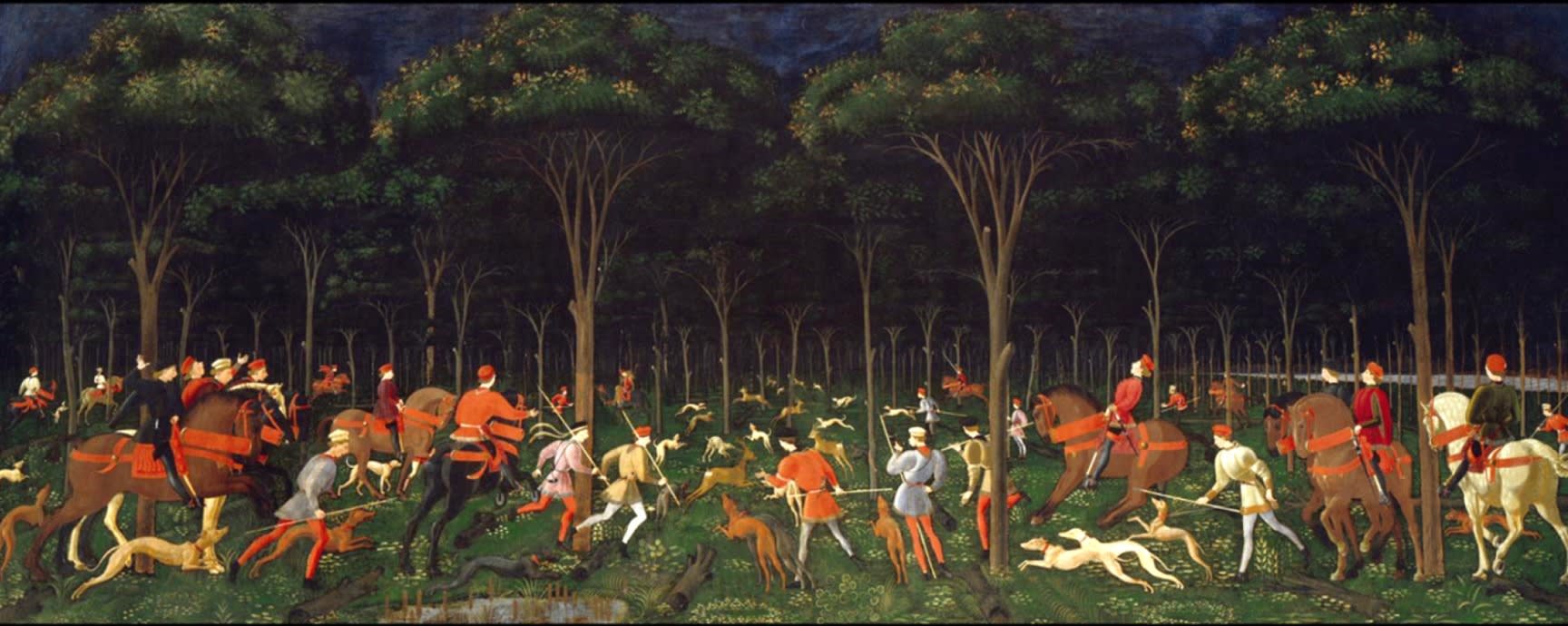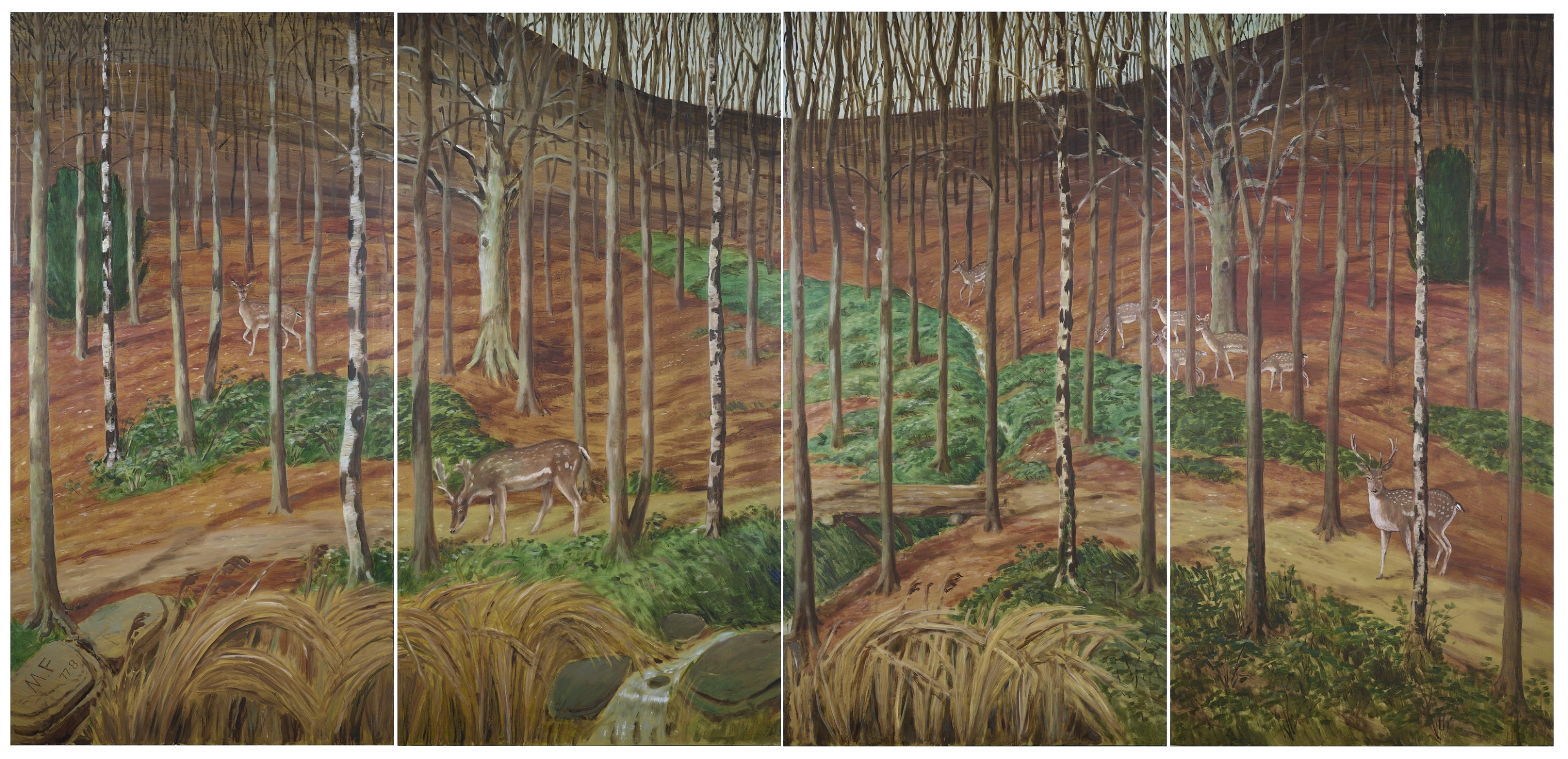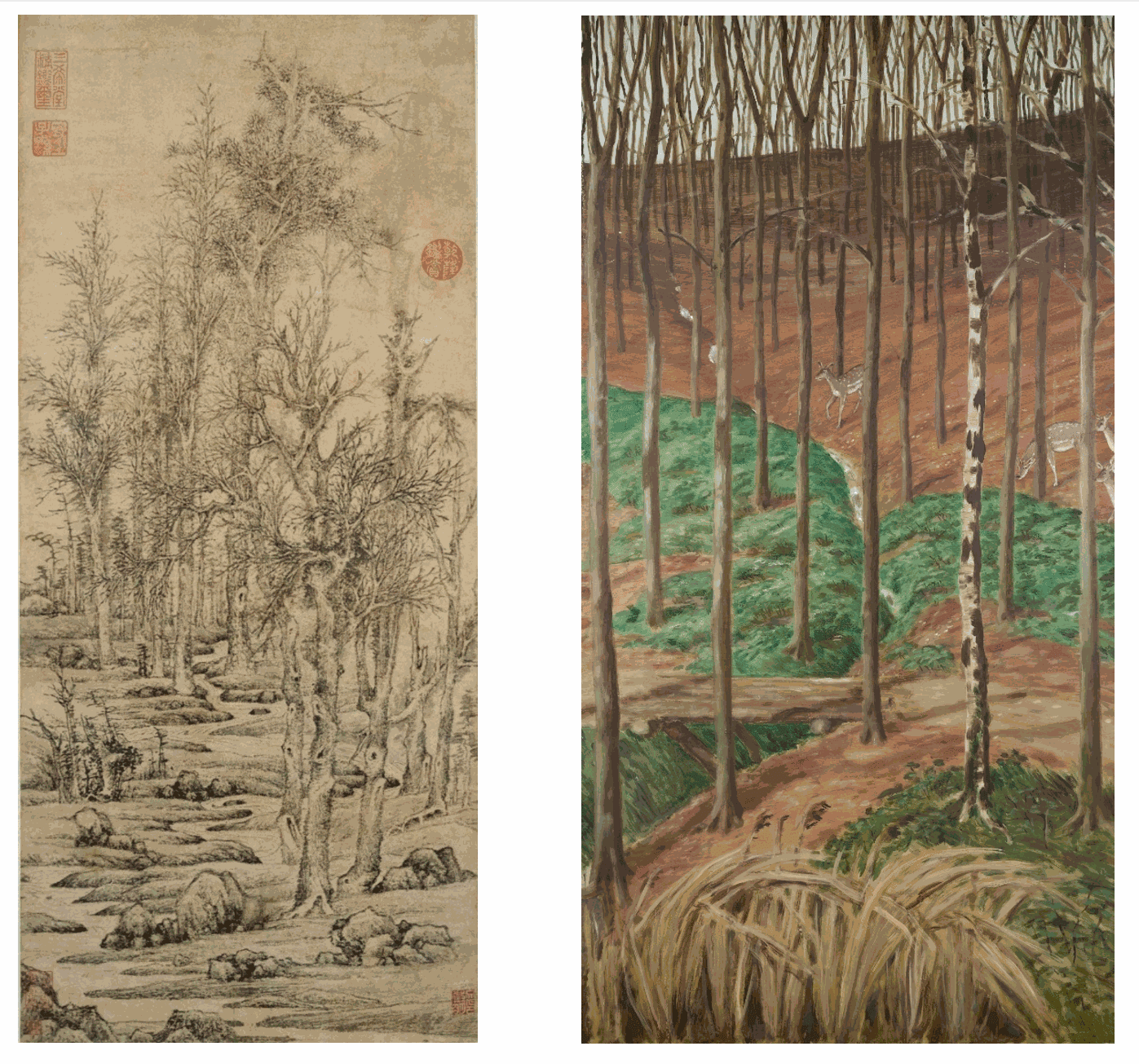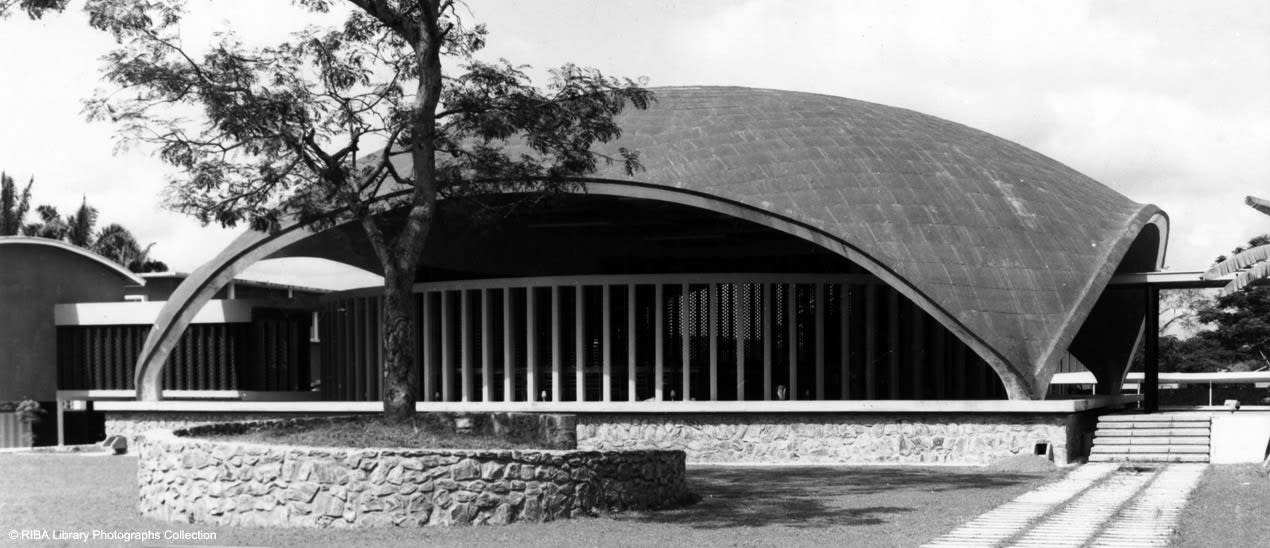
Edwin Maxwell Fry
Forest with a Herd of Deer, 1977-78
Four panel Frieze
Oil paint on four boards
Each panel: 215 x 113cm; 84 3/4 x 44 1/2in
Total dimensions: : 215 x 452cm; 44 1/2 x 178in
Initialled and dated 77-8 lower left
Introduction
I never planned on becoming an art dealer. I loved the nine years that I spent at the Courtauld Institute completing my masters and doctorate and then teaching. If it had been possible to get tenure I’d probably still be there!
It was pure chance that I didn’t continue researching, teaching, writing and curating in an academic context. But I have been incredibly fortunate to continue the activities that I love all be it in different contexts.
When I started my own gallery in 1999 it felt natural to focus on the areas that I had studied and for which I was known. My PhD thesis and book, The Battle for Realism looked at the transformation of figurative art in Britain in the years following the Second World War and, despite detours, this remains the direction that the gallery has perused over the last twenty five years.
The artists that I met and studied, among them Walter Sickert, David Bomberg, Frank Auerbach and Leon Kossoff, became the heart of the gallery’s exhibition programme and we started to represent several of the greatest painters of this generation who had not enjoyed the level of success that they deserved including Peter de Francia, Derrick Greaves, Nigel Henderson, Robert Medley, Edward Middleditch. In our early days it felt pioneering to be showing artists who were not in fashion. Early shows of sculpture and figurative painting such as Henry Moore and the Geometry of Fear and From Life turned a spotlight on these neglected areas and remain a foundation for the gallery.
However, my scholarly approach has not always led to the best commercial choices. Frequently I’ve bought a picture that I would like to own myself or that I consider to be of historical importance without really thinking about who might actually buy it. As an art historian, I love “museum art” - art of historical significance - but it’s not always what someone might actually want to hang in their home. It means that we have handled some incredible works, placed them in amazing international collections, and sold extensively to museums across the world. But it also means that we acquire works that I love without always having a buyer in mind.
I’m sure that some of the most commercially successful dealers are those that remove their personal feelings from their decisions on what to purchase: whether they love or appreciate a picture matters less than whether or not they can sell it. But for me it’s always been the opposite. Do I love the picture? Is it something that I would want to own? I have always been excited, first and foremost by the artwork, then sought to learn more about it, and then finally to place it with a museum or a private collector.
Of course historical importance does not always mean commercial success. This is something that I learnt early on in my very first job in the art world as gallery administrator at the Saatchi collection during its great days at Boundary Road. I was obsessed by Leon Kossoff’s work and was amazed that a private collector could own so many of Leon’s best large-scale works. I learnt that most of Leon’s collectors had the space and budgets for smaller more domestic works meaning that many of his most important large-scale museum pieces had remained unsold. However, whilst receiving this practical lesson, I’ve always been too excited by the artworks themselves to really heed this advice.
I’ve also never looked for the easiest route or the most fashionable or supposedly most commercial one. I’ve always been led by my own gut feeling and this has often led me to exhibit exhilarating but neglected artists before they were more universally validated.
I’ve always hoped that my gallery is a place to find the greatest works by the greatest artists but also that it is a place of discovery, for collectors as well as for myself, a place to find the special but less familiar.
So to start this series, I’ve selected a recent discovery and a prime example of following my heart as well as my head. The chance to own the largest and most important painting by one of the greatest modernist architects of the twentieth century, Edwin Maxwell Fry, was simply too good to resist. The fact that Maxwell Fry is better known as an architect than a painter makes the chance to handle this work even more motivating for me.
Personally, it’s another chance for me to study and learn whilst publicly it’s another incredible opportunity for a museum or private collector to purchase something truly special.
Once more, I’m excited to draw attention to an important but unfamiliar work that deserves greater recognition and celebration. And, once again, my enthusiasm for a picture has made me take a leap into the unknown. It remains to be seen who will purchase a painting of this size, however impressive!
Dr James Hyman
JAMES HYMAN GALLERY
The Painting
Edwin Maxwell Fry's Forest with a Herd of Deer (1977-78) is a panoramic frieze made up of four vertical panels. Across the painting the palette is predominatly the greens and earth tones of nature, from the grasses and tree trunks to the deer. The soft forms of the grasses and deer provide a contrast with the structure provided by the repeating forms of the tree trunks whose thin forms and wintry lack of foliage emphasise their verticality.
Art Historical References
The composition with its extended horizontal format and frieze of silver birch trees contains strong echoes of the Ashmolean's most famous painting, Paulo Ucello's celebrated The Hunt in the Forest (c.1470).




Pilotis and Trees



